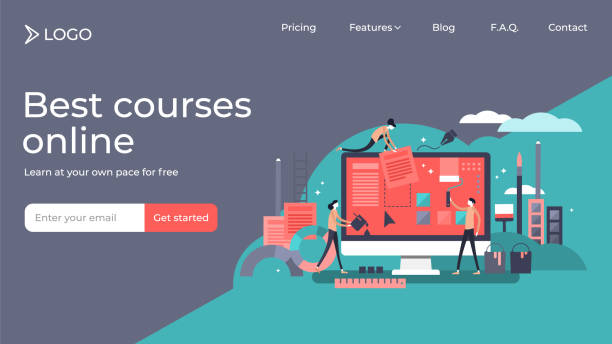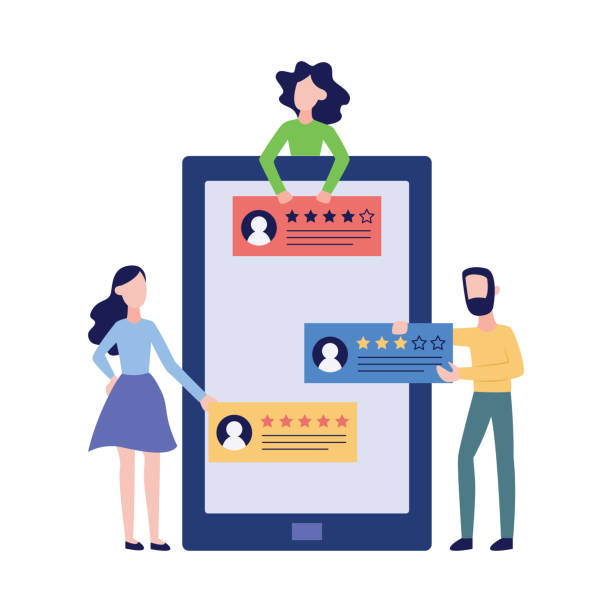Introduction to On-Page SEO and its Importance

In the dynamic world of Search Engine Optimization (SEO), On-Page SEO is considered the cornerstone of any website’s success.
Unlike Off-Page SEO, which deals with external activities like link building, On-Page SEO focuses on improving elements within the website itself to help search engines better understand and recognize the value of your content.
This process includes optimizing elements such as keywords, content, images, URL structure, and internal linking.
The importance of On-Page SEO doubles when we consider that search engines like Google constantly update their algorithms to provide the best and most relevant results to users.
Therefore, strong On-Page SEO not only helps increase your site’s visibility but also improves user experience (UX), which is itself an important ranking factor.
This educational and explanatory section introduces you to the fundamental concepts of On-Page SEO and clarifies its vital importance in achieving top rankings in search results.
A correct understanding of these principles is the first step towards building a sustainable and effective SEO strategy.
Did you know that poor online store design can drive away up to 70% of your potential customers? Rasaweb transforms your sales with professional and user-friendly e-commerce website design.
✅ Significant increase in sales and revenue
✅ Full optimization for search engines and mobile devices
⚡ [Get Free Consultation from Rasaweb]
Keywords and their Vital Role in On-Page SEO

Keywords are the heart of any On-Page SEO strategy.
The correct selection and use of keywords not only tells search engines what your content is about but also helps users quickly find the information they need.
This specialized and guidance section delves into how to find and effectively use keywords in On-Page SEO.
First, keyword research is essential.
Tools like Google Keyword Planner, Semrush, and Ahrefs help you identify high-volume and relevant keywords for your field of activity.
Paying attention to long-tail keywords, which are less competitive and more targeted, can yield excellent results for your On-Page SEO.
After identification, the next step is strategic use of keywords throughout the page: in the title (title tag), meta description, heading tags (H1, H2, etc.), main body content, and even in the URL and image file names.
However, you should avoid overusing keywords (keyword stuffing), as this practice is not only penalized by search engines but also significantly degrades the user experience.
The main goal is to integrate keywords naturally and smoothly into the content so that they are completely natural and meaningful to the reader.
Remember, your content should be written first for users and then for search engines.
Content Optimization for On-Page SEO
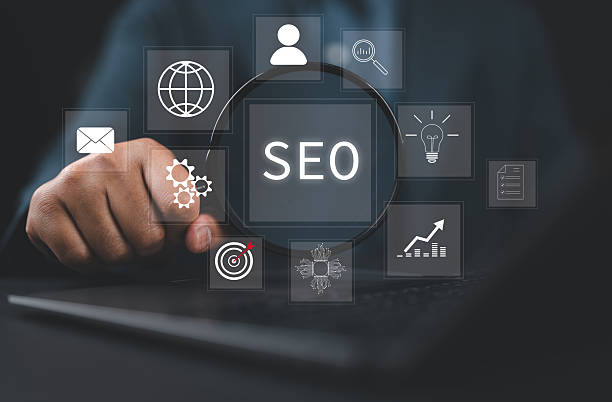
Content is king; this statement holds true more than ever in the world of On-Page SEO.
Producing high-quality, relevant, and engaging content not only attracts users but also signals to search engines that your page is valuable.
This explanatory and educational section shows you how to optimize your content for maximum effectiveness in On-Page SEO.
One of the most important aspects is content readability.
Using short paragraphs, clear sentences, bulleted lists, and subheadings (using H2, H3, etc. tags) significantly helps improve structure and readability.
Integrate keywords naturally into the text, especially in the opening and closing paragraphs.
In addition to text, images and videos also play an important role in On-Page SEO.
Ensure that images are optimized (compression for loading speed, use of descriptive Alt tags containing keywords).
Internal linking to other relevant pages on your website is also a powerful strategy for On-Page SEO; this not only helps search engine crawlers discover more pages but also improves user experience and increases user dwell time on the site.
Finally, evergreen content that remains valuable over time is a great asset for your On-Page SEO.
| Optimization Factor | Description | Importance (1-5) |
|---|---|---|
| Content Quality | Unique, in-depth, and valuable content for the user. | 5 |
| Keyword Usage | Natural integration of primary and secondary keywords into the text. | 4 |
| Structure and Readability | Use of headings (H1-H6), short paragraphs, and lists. | 4 |
| Image Optimization | Compression, descriptive Alt Text, and appropriate file names. | 3 |
| Internal Linking | Linking to relevant internal pages with appropriate anchor text. | 4 |
| Content Freshness | Periodic content updates to maintain relevance and freshness. | 3 |
Critical HTML Tags and their Impact on On-Page SEO
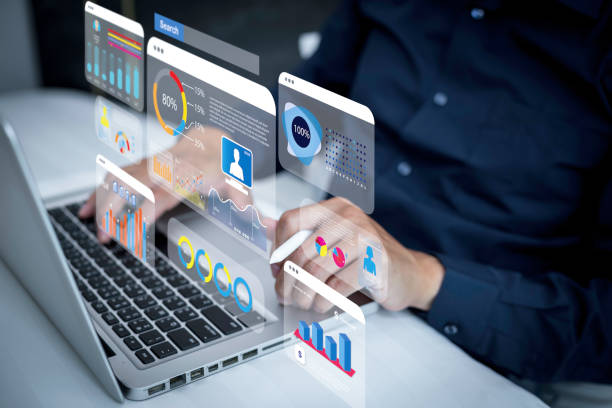
In addition to user-visible content, hidden HTML elements also play a significant role in On-Page SEO.
Search engines use these tags to understand your page’s structure and topic.
This specialized and guidance section introduces the most important HTML tags and how to optimize them for On-Page SEO.
The Title Tag is perhaps the most important tag in On-Page SEO.
This tag, displayed in the browser tab and often the main title in search results, should contain your main keyword and be engaging and persuasive (usually between 50 to 60 characters).
The Meta Description, although not a direct ranking factor, influences the click-through rate (CTR) in search results.
This description should be an attractive summary of the page’s content and encourage users to click (usually between 150 to 160 characters).
Heading tags (H1-H6) are used to structure content and display information hierarchy.
H1 should include the main keyword and be used only once per page.
H2 and H3 tags are used for subheadings and better text organization.
The Alt tag for images helps search engines understand the content of images, which aids in image search rankings and is also vital for web accessibility.
Finally, the Canonical tag is used to prevent duplicate content issues and tells search engines which version of a page is the original.
Careful optimization of these tags provides a strong foundation for your On-Page SEO.
Are you worried about losing customers because you don’t have a professional e-commerce website?
With Rasaweb’s e-commerce website design, forget these worries!
✅ Significant increase in your sales and visitor-to-customer conversion rate
✅ Professional and user-friendly design that builds customer trust
⚡ Get a free consultation from Rasaweb now!
Site Loading Speed and User Experience in On-Page SEO
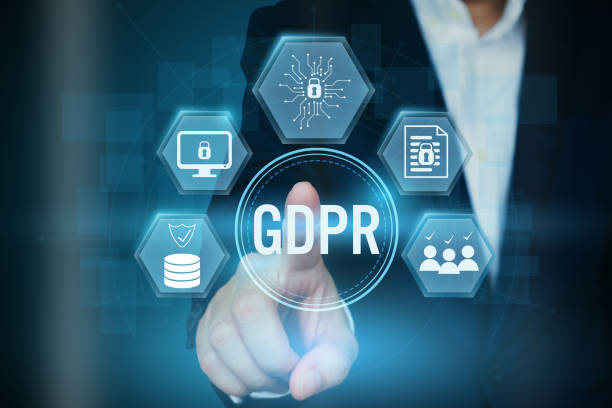
In today’s fast-paced internet world, site loading speed is not only an important factor for user experience (UX) but also directly impacts your ranking in search results.
This analytical and explanatory section examines why site speed is important in On-Page SEO and solutions for improving it.
Google has repeatedly emphasized that site speed is a key ranking factor because faster pages provide a better user experience.
Today’s users have little patience, and if your site is slow, the probability of bounce is very high, which is considered a negative signal for search engines.
To measure site speed, you can use tools like Google PageSpeed Insights, GTmetrix, or Pingdom Tools, which provide weaknesses and improvement suggestions.
Solutions to increase speed include compressing images without losing quality, enabling browser caching, optimizing code (minifying CSS, JavaScript, and HTML), and using quality hosting.
Also, given Google’s mobile-first indexing, ensuring responsive design and appropriate site speed on mobile devices is of high importance.
A fast site not only achieves a better ranking in search results but also has a higher conversion rate because users access the information they need without wasting time.
Internal Linking and Site Structure Improvement

Internal linking is one of the most powerful On-Page SEO tools that is often overlooked.
This process involves creating links from one page to another within your own website.
This guidance and educational section covers the importance and implementation of an effective internal linking strategy to improve On-Page SEO.
Internal links play three vital roles: Firstly, they help users easily navigate your site and find relevant information, which improves user experience.
Secondly, they help search engines understand your site’s structure and crawl and index different pages.
Thirdly, they distribute authority (Link Equity) throughout your site.
Pages that receive many internal links usually appear more important to search engines.
For a successful internal linking strategy, use descriptive and relevant Anchor Text.
Instead of “click here,” use phrases like “complete guide to On-Page SEO“.
Also, pay attention to the concept of Content Siloing; that is, grouping related pages and linking them to each other to create a strong thematic structure.
This not only helps search engines understand your expertise in a specific area but also makes it easier for users to find information related to a particular topic.
Smart internal linking is the backbone of powerful On-Page SEO.
Technical On-Page SEO and Advanced Factors

In addition to content and structural aspects, On-Page SEO also includes advanced technical factors that ensure the crawlability and indexability of the site by search engines.
This specialized and analytical section examines these factors, which are often overlooked by beginners.
One of the most important is the use of Schema Markup (structured data).
These codes help search engines better understand your content and display it as Rich Snippets in search results (such as star ratings for products, contact information, or instructions), which significantly increases click-through rates.
An XML Sitemap is a list of all important pages on your site that helps search engines easily discover and index all your content.
The Robots.txt file tells search engines which parts of your site they can crawl and which they should not.
Ensuring the use of the HTTPS protocol through installing an SSL certificate is not only vital for your site’s security but is also considered an On-Page SEO ranking factor.
Also, managing duplicate content, which can harm your ranking, through the use of the Canonical tag or 301 redirects, is very important.
Finally, checking crawl errors in Google Search Console is also essential for maintaining the health of your On-Page SEO.
Addressing these technical aspects builds the foundation for powerful and sustainable On-Page SEO.
| Technical Issue | Description | Suggested Solution |
|---|---|---|
| Slow Site Speed | Pages load slowly, poor user experience. | Compress images, caching, Minify CSS/JS. |
| Duplicate Content | Identical or very similar versions of content on different URLs. | Use Canonical tag, 301 redirect. |
| Broken Links | Links that lead to non-existent pages (404 error). | Use link checking tools, fix or redirect. |
| Missing XML Sitemap | Search engines cannot easily discover all pages. | Create and submit sitemap in Google Search Console. |
| SSL (HTTPS) Issues | Site uses HTTP protocol, which is considered insecure. | Install SSL certificate and redirect to HTTPS. |
| Poor Mobile-Friendliness | Site does not display well on mobile devices. | Responsive Design. |
The Role of Updates and Fresh Content in On-Page SEO
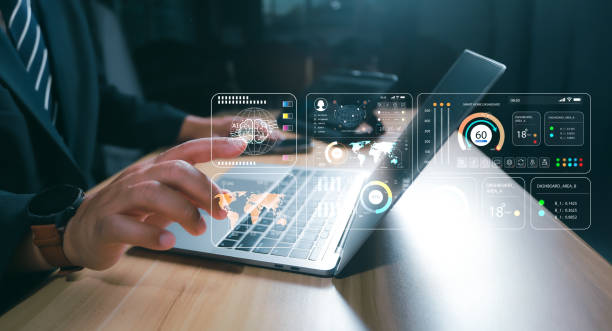
The world of Google algorithms is constantly changing and evolving, and these updates directly impact your On-Page SEO strategy.
This news and explanatory section addresses the importance of aligning with these changes and the role of fresh content in maintaining site ranking and authority.
Google constantly updates its algorithms to make search results more accurate and relevant.
These updates can include changes in how content is ranked, more attention to user experience, or technical factors.
Therefore, staying aware of the latest SEO news and adapting to them is vital for the stability of your On-Page SEO ranking.
One of the most important factors that Google has always paid attention to is Content Freshness.
Old and outdated content, even if it had a good ranking in the past, may decline over time.
Regularly updating old articles by adding new information, fresh statistics, or better images, signals to search engines that your site is active and dynamic.
This not only helps maintain rankings but also attracts new audiences.
Producing new and relevant content is also very important.
By regularly publishing new content, you not only target more keywords but also establish yourself as a credible and up-to-date resource in your field.
Ultimately, being active in the content sphere and responding to new user needs is the key to sustained success in On-Page SEO.
Are you frustrated with your online store’s low conversion rate?
Rasaweb, with its professional e-commerce website design, is your definitive solution!
✅ Increase your sales and revenue
✅ Exceptional user experience for your customers
⚡ Get a free consultation now!
Competitor Analysis and On-Page SEO Performance Monitoring
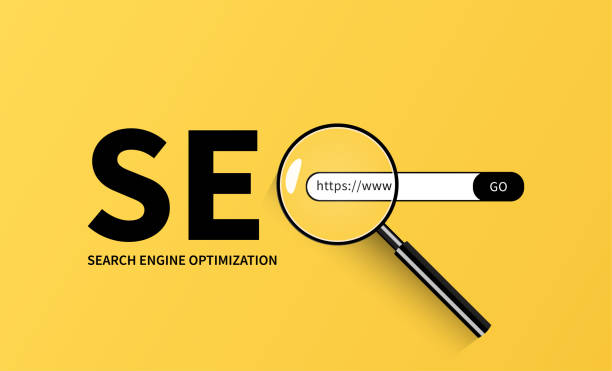
To excel in the competitive online space, simply focusing on your own site is not enough; you must also pay attention to your competitors.
This analytical and guidance section addresses the importance of competitor analysis and continuous monitoring of your On-Page SEO performance.
Competitor analysis allows you to identify the strengths and weaknesses of your On-Page SEO strategy compared to others.
Using tools like SEMrush, Ahrefs, or Moz, you can examine the keywords your competitors rank for, their backlinks, and the content structure of their top-performing pages.
This information can help you discover new opportunities for On-Page SEO, such as finding new keywords or improving your content structure.
After implementing On-Page SEO changes, performance monitoring is essential.
Tools like Google Analytics and Google Search Console provide valuable data on site traffic, keyword rankings, click-through rates, and crawl errors.
By regularly analyzing this data, you can evaluate the effectiveness of the changes made and identify areas that need improvement.
For example, if the click-through rate for a specific title is low, you might need to rewrite the Title Tag and Meta Description.
This data-driven and iterative approach helps you continuously optimize your On-Page SEO strategy and ultimately achieve better rankings and sustainable organic traffic.
Frequently Asked Questions about On-Page SEO and Conclusion
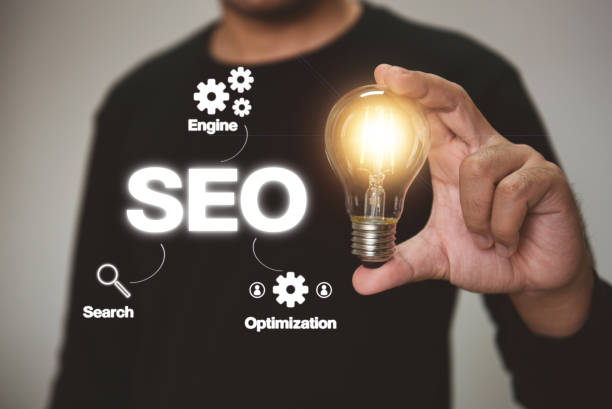
Given the complexities of On-Page SEO, many questions may arise for users, especially beginners.
This section, a combination of inquisitive content and a summary, answers some of the most common ambiguities about On-Page SEO and reviews key points.
Is On-Page SEO only about keywords? The short answer is no.
As we saw in previous sections, On-Page SEO is a comprehensive approach that includes content quality, site speed, user experience, technical structure, and many other factors.
Keywords are just one important piece of this puzzle.
How long does it take to see On-Page SEO results? SEO is a time-consuming process, and its results are usually not immediately visible.
Depending on keyword competition and your domain authority, it may take weeks to months to see significant improvements in ranking and traffic.
Can we do On-Page SEO ourselves? Yes, by studying and using available tools, you can optimize many aspects of On-Page SEO yourself.
However, for more complex cases or to achieve faster results in highly competitive markets, professional help may be needed.
In conclusion, remember that On-Page SEO is a long-term investment.
By focusing on providing value to users, producing high-quality content, and continuously optimizing the technical and content aspects of your site, you can lay the foundations for a strong and sustainable online presence.
This process requires patience, continuous learning, and careful analysis, but its reward will be sustainable organic traffic and increased visibility in search engines.
Frequently Asked Questions
| Question | Answer |
|---|---|
| What is On-page SEO? | On-page SEO refers to a set of actions performed within the website and on the content of its pages to achieve a better ranking in search results. |
| Why is On-page SEO important for a website? | On-page SEO helps search engines better understand your page’s content and assess its importance. It also provides a better user experience for visitors. |
| What are the most important On-page SEO factors? | The most important factors include keyword optimization, content quality, Title Tag, Meta Description, URL structure, heading tags (H1-H6), internal linking, and image optimization. |
| What role does the Title Tag play in On-page SEO? | The Title Tag is one of the most important On-page SEO factors that displays your page’s title in search results and the browser tab. It should include the main keyword and be engaging. |
| What is the importance of Meta Description in On-page SEO? | The Meta Description provides a summary of the page’s content, and although it does not directly affect ranking, it can increase the click-through rate (CTR) by encouraging users to click. |
| How are keywords used in On-page SEO? | Keywords are phrases that users use to search for information in search engines. Proper and natural use of them in content helps the search engine determine the page’s topic. |
| What is internal linking and what is its benefit in On-page SEO? | Internal linking means creating links between different pages of a website. This helps distribute page authority, assists search engine robots in crawling, and improves user experience. |
| How does image optimization affect On-page SEO? | Image optimization includes compressing file size, using appropriate Alt tags, and proper file naming. This improves page loading speed and helps search engines understand image content. |
| What does quality content mean in On-page SEO? | Quality content means content that is comprehensive, accurate, unique, up-to-date, and user-friendly, and meets users’ needs. |
| What role does URL structure play in On-page SEO? | Readable, short URLs that include the main keyword help search engines and users better understand the page content and improve user experience. |
And other services of Rasaweb Advertising Agency in the field of advertising
Smart Reporting: A combination of creativity and technology for digital branding through intelligent data analysis.
Smart Digital Advertising: A new service to increase website traffic through precise audience targeting.
Smart Custom Software: Transform digital branding with custom programming.
Smart Digital Branding: A fast and efficient solution to increase website traffic with a focus on attractive user interface design.
Smart Reporting: A professional solution for customer acquisition with a focus on precise audience targeting.
And over a hundred other services in the field of internet advertising, advertising consultation, and organizational solutions
Internet Advertising | Advertising Strategy | Advertorials
Sources
Comprehensive Guide to On-Page SEO – Raya Marketing
On-Page SEO Training – SEO Diyar
What is On-Page SEO? – Webnama
On-Page SEO Factors – Avada
? Are you ready to transform your business in the digital world? Rasaweb Afarin, a leading digital marketing agency, provides innovative and targeted solutions for your growth and success by offering comprehensive services including custom website design, SEO, and content marketing. With us, have a powerful and impactful online presence and achieve your business goals.
📍 Tehran, Mirdamad Street, next to Bank Markazi, Kazerun Jonubi Alley, Ramin Alley, No. 6


